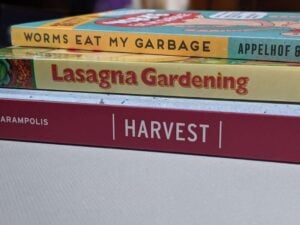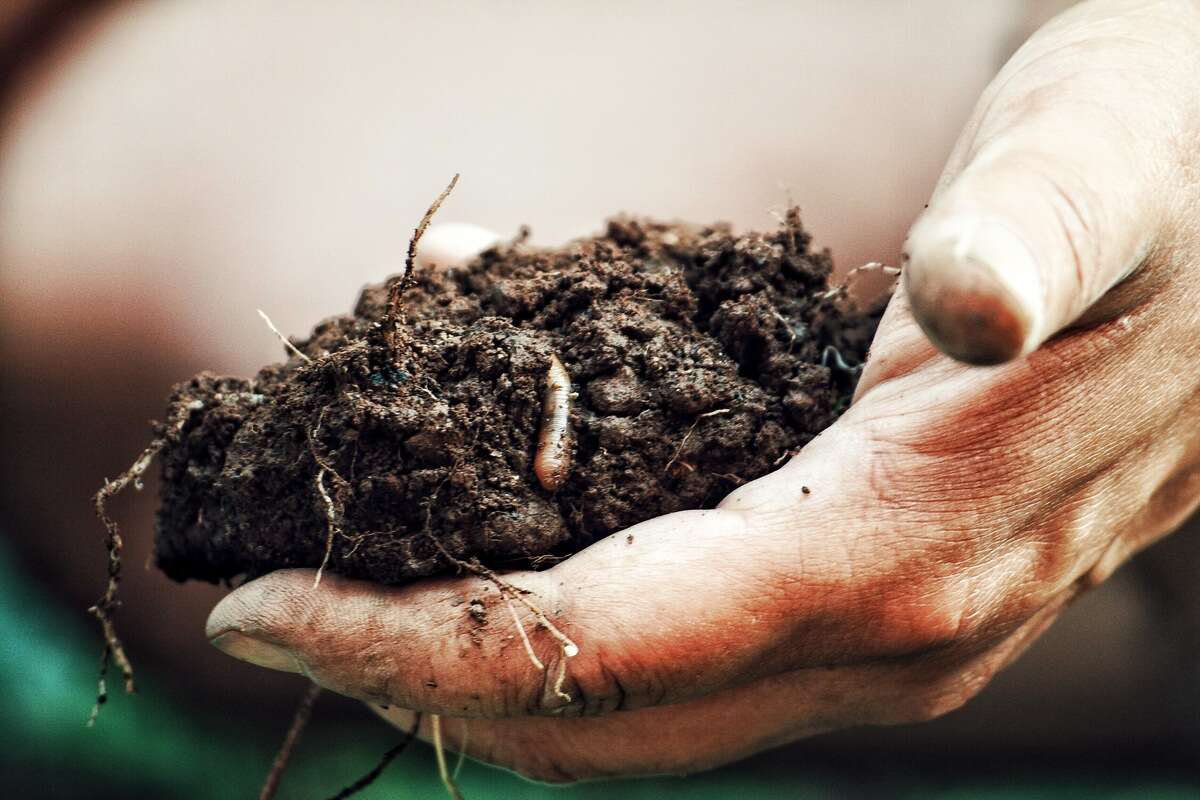When you have a vermicomposting system, you periodically need to harvest your worm castings. Why? Because this nutrient-rich “black gold” is the perfect fertilizer for your plants! Harvesting also helps keep the worms healthy. You will know it’s time to harvest when most of your worm bedding has been turned into a rich, dark, soil-like substance of vermicompost and castings.
So, let’s talk more about harvesting worm castings – let us tell you about some of the best practices when it comes to harvesting and how to get the best results.
What Are Worm Castings?
First things first, let’s explain what worm castings are. Worm castings, a.k.a. vermicompost or worm humus, are an organic fertilizer created by composting organic materials with the help of worms. Simply put, worm castings are the waste produced by worms as they digest organic matter.
Worm castings are highly valued among gardeners and farmers because they’re rich in nutrients essential for plant growth (nitrogen, phosphorus, and potassium). They also contain beneficial microorganisms which help improve soil health and prevent plant diseases.
You can use worm castings in various ways – as a soil amendment, a top dressing for plants, or a component of potting soil. They’re often considered a superior alternative to chemical fertilizers, as they’re more eco-friendly and provide a more balanced nutrient profile for plants.
How to Harvest Worm Castings – The 4 Best Harvesting Methods
There are several good methods for harvesting worm castings for small home-based vermicomposting bins. The method you choose will depend on the type of system you have set up, and on your personal taste.
There are single-tray vermicomposting systems, stackable multi-tray systems, and many do-it-yourself systems. Choose a method that efficiently extracts the casting while leaving enough worms behind to keep composting.
Method One: Encourage Worm Relocation
A very popular method for harvesting, the worm relocation method is based on the fact that worms will migrate towards food.
- In a single tray system, gather whatever uncomposted scraps remain in the castings and move them to one side of the tray or the center. Add fresh food only in the spot you want the worms.
- In a multi-tray vermicomposting system, put food in the tray above the one you want to harvest.
In a matter of one to four weeks, depending on the size of the tray, most of the worms will naturally migrate to the food source. This will leave you with nearly worm-free castings to harvest. At this point, you can also fish out any remaining eggs, which are small and yellow and will yield more worms in the future. This method is great for anyone who feels squeamish about touching worms.
Method Two: Relocation by Light
Worms will automatically move away from any light source, which is why the light method is handy. Essentially, you can yield worm-free castings by applying artificial light or sunlight to your castings.
Caution: Never expose your worms to excessive sunlight or heat, or they may dry up and die.
You can try one of two things:
- Gently dump out your worm tray onto a clean, stable surface and build mounds of castings. In about twenty minutes, your composting worms will burrow down to the bottom and away from the sides to escape the light. You can then scrape off the tops and sides of the pile, working in until only small piles remain.
- Gently put the worm castings into a temporary holding container. Add more food and bedding to the now-empty worm tray. Drape a piece of burlap or other material with worm-sized holes over the worm tray. Spread a thin layer of castings and worms, 1-2 inches thick, over the cloth and wait twenty minutes. By then, the worms will have burrowed down into the worm tray. Put the worm-free castings into a storage container, and apply them to your plants’ soil.
This method must be done in a timely fashion so that the worms stay damp. Both sunlight and human hands can dry out worms, which can harm them.
Note: Instead of burlap, you can construct your own filtering trays using wire mesh.
Method Three: Hand Harvest
For those willing to do things at a slower, steadier pace or who only need a few handfuls of castings right now, this method may be desirable.
Simplest of all, it only requires gathering handfuls of castings and sifting through them for worms which can then be placed back in the tray. You can dump out the entire tray at once, reload it with food bedding, and sort through it all. Or you can choose just a few handfuls if it is not an appropriate moment for a full harvest. Children often enjoy the fun of this kind of sorting.
Method Four: Screen Compost
Sift the worm bedding through a screen and you will separate the worms, sticks, and undigested material from the finished compost easily. Screened compost is especially valued because it’s light and fluffy, and free of debris. You can buy or make a composting screen.
See our instructions for screening compost.
How to Store Worm Castings
After your worm castings are harvested, they can be stored in a sack, clean bucket, or another container until you are ready to use them. They are teaming with healthy soil bacteria and nutrients that are perfect for adding to soil. Help your plants and lawn grow strong, and keep your worm population happy by harvesting worm castings regularly.
How Long Do Worm Castings Last?
Harvesting castings from a worm bin or vermicomposting system is a rewarding process that can produce a nutrient-rich fertilizer perfect for your garden. But, you might wonder how long worm castings last – do they expire?
The good news is that worm castings have a long shelf life and can be stored for extended periods without losing their potency. They can last for up to a year if stored in a dry and cool place. But keep in mind that the longer you store them, the less effective they become.
Fresh worm castings are teeming with beneficial microorganisms essential for plant growth. Over time, these microorganisms begin to die off, reducing the potency of the castings. So, for the best results, use the worm castings as soon as possible after harvesting them.
If you’re planning on storing the castings for an extended period, it’s best to keep them in an airtight container to prevent moisture from getting in. Moisture can cause the castings to clump together, making them more difficult to use. Also, avoid exposing your worm castings to direct sunlight, which can cause them to dry out and lose effectiveness.
How Often Should You Harvest Worm Castings?
The frequency of harvesting worm castings depends on several factors, for example, the size of your worm bin, the amount of organic matter you add, and the number of worms in your bin. As a rule of thumb, you can harvest worm castings every three to six months.
To determine if it’s time to harvest the castings, check the bottom of your compost bin. The castings will accumulate at the bottom of the bin, and you might notice a layer of dark, crumbly compost. If the compost has a pleasant earthy smell and is free of worms and undigested organic matter, it’s ready to harvest.
Get Your Composting Worms Today
If you want to get into vermicomposting or simply need more composting worms, the solution is easy. Just order worms online from Uncle Jim’s Worm Farm!
We have been in the worm business for over 25 years, so we must be doing something right. They are guaranteed to arrive alive, or we will replace them. We’re at your service, so place your order and start worm composting today! Your soil and plants will thank you.








12 thoughts on “Harvesting Worm Castings”
i have been looking on the net to find the answer to this question. How long do worm casting last? In other words, is there a shelf life? How long roughly? I have filled a 5 gallon bucket and its mid November now. Will they last till spring?
thanks Uncle Jim,
sincerely Adam Cooper
Hi Adam,
The compost can last indefinitely. However, once dried out, the microbes that are throughout the compost will not last. You will want to use it as soon as possible to utilize all of it’s benefits. Have a great day!
I have the same question. I have castings ready to harvest now in December. But how can I keep them without loosing the nutrients? Can I put them in the garden under mulch when it’s snowy?
Thank you.
I accidentally mixed in shredded credit cards in with my paper. I though I picked it all out, but there is still some left in my work castings. What can I do to separate the soil from the plastic strips?
Thank you.
I use the stacked tray system. I have successfully harvested the bottom tray while the worms are “dining” in the upper trays. I mixed my harvest in my potting soil but have tiny tomato plants coming up in abundance. I guess the solution is no tomatoes?
magnificent post, ery informative. I wonder why the
other experts of this sector do not notice this.
You shluld proceed your writing. I’m sure, you’ve a huge readers’ base already!
I’m new to this and plan to raise worms for fishing not composting but I would like to understand “Casting”/worm po which I can use as ferterlizer. I have a 32 qt container with about 4″ of peat moss. How long after I put my red worms in can I harvest the castings. Where are the casting found (on top, middle, or bottom of my peat moss). Do I just pour all my peat moss and worms in my 32 qt container in to my 1/4″ and 1/8” screen and all that’s not collected as either worms or eggs are considered casting, and then add all new peat moss???
OK, I received 20 pounds of worm casting along with some tomato food, although I ordered ROSE food with expensive roses due at any moment! No instruction about how to use the worm poop ! What do I do….?
Hal Meadows
Harvesting from a multilayer system using the screen method. When I filter through the screen and I can see hundreds of teenie tiny baby worms (Yay!) but how do I filter the baby worms from the castings? They are so tiny they go right through the screen! Thinking I’ll put the castings in a bucket, shine light to make all the babies go to the bottom and then just take off the top layer as readily available for use? Thoughts?
I have the “Squirm Firm Worm Factory 360”. It is a “self-sorting upward migrating system” of trays. I have all trays finally going, after several months of adding food, thus filling trays, then adding a tray with new bedding and food to draw the worms upward. I went to “harvest” my first tray, the bottom one as per instructions, and it looks like dry bedding with some egg shells. I am not seeing anything in that bottom tray that looks like “black gold”. Oh, and did I mention it is dry. Very dry. What do you suggest?
Can u tell me how does a person harvest worms
Im somewhere in the 3-6 month range and my bottom tray of my worm factory 360 is a deep black but very moist and with not the most pleasant smell coming from it so I’m thinking I hadn’t added enough carbon to this tray and it isn’t getting enough oxygen. Should I amend it with some shredded paper for a period of time to correct that before harvesting? I can still find worms in this tray so I imagine they’d be able to snack on that as well as all the other parts of the ecosystem.